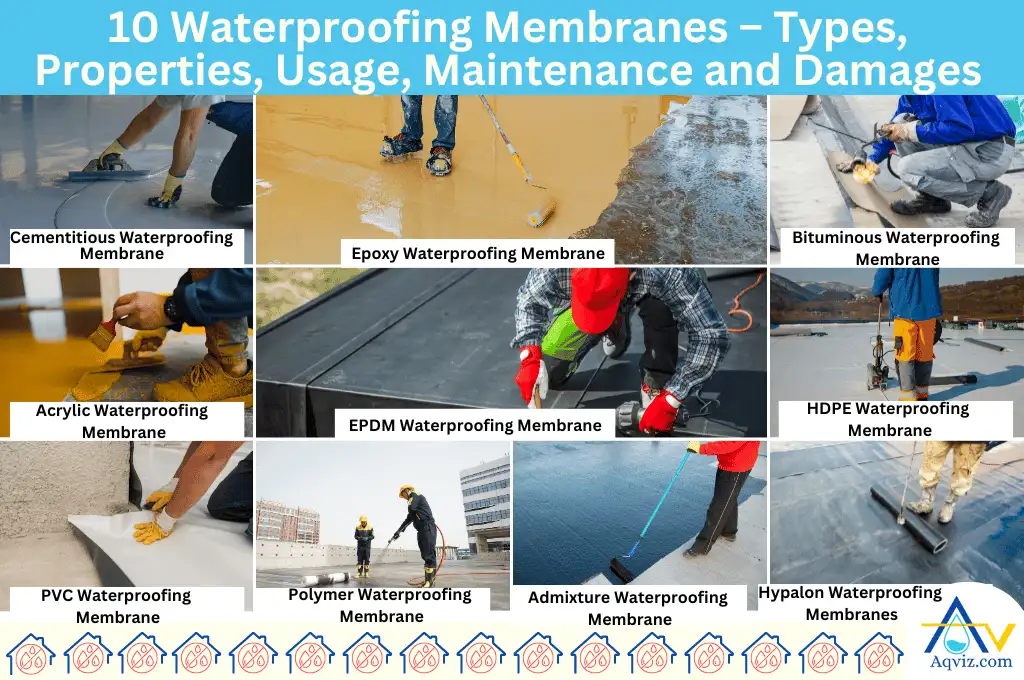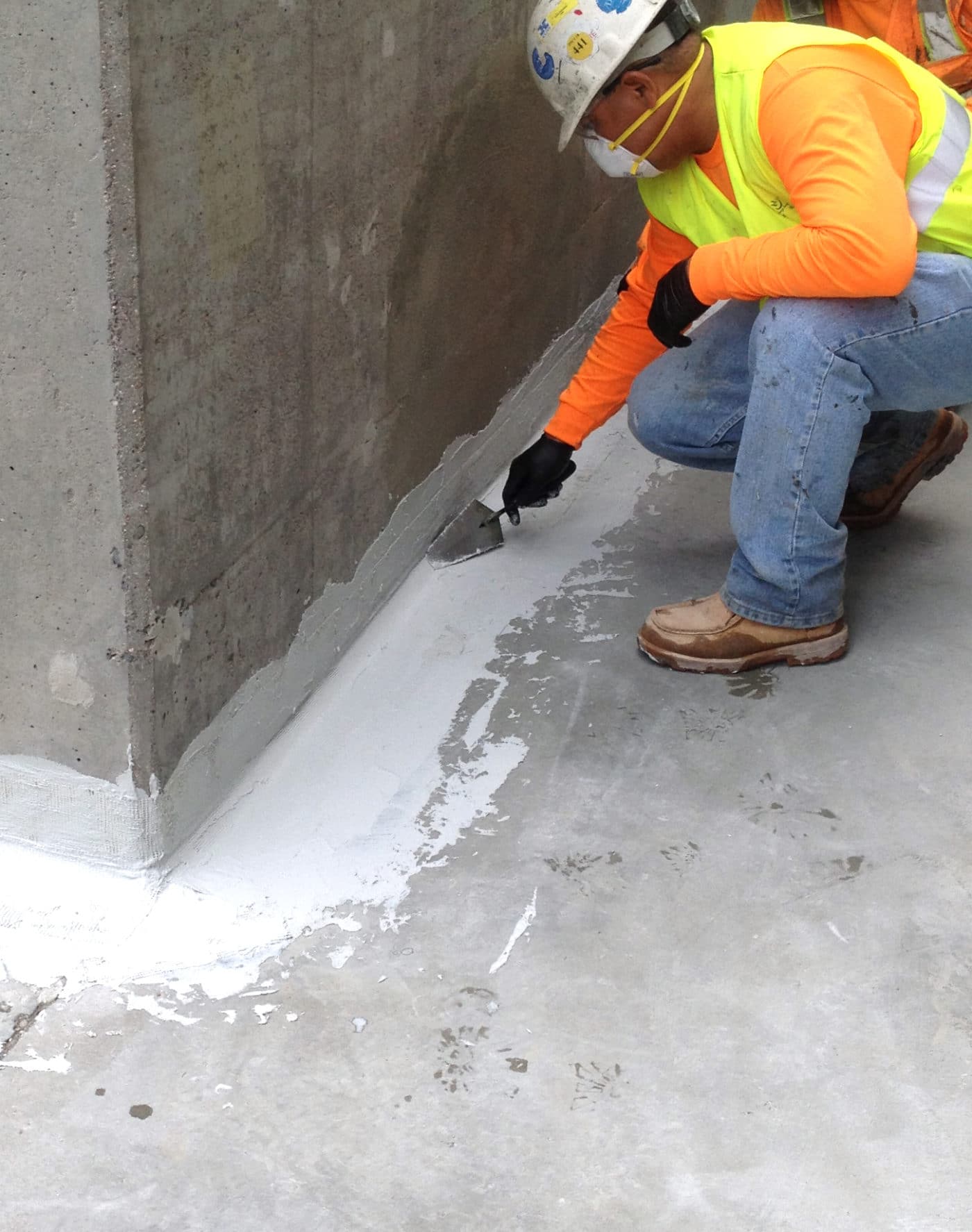French drain installation Omaha Explained: What Every Homeowner Should Know
Wiki Article
Kinds of Waterproofing: Discovering the Various Methods and Their Applications
Waterproofing is an important element of building and upkeep. It shields frameworks from the detrimental effects of water damages. There are several approaches readily available, each with its distinct applications and advantages. From membrane layer systems to cementitious solutions, comprehending these alternatives is vital for reliable implementation. The selection of waterproofing approach can substantially influence longevity and long life. Discovering these various techniques reveals their distinctive benefits and potential challenges, triggering further factor to consider of excellent remedies.Membrane Layer Waterproofing Systems
Membrane waterproofing systems act as a crucial obstacle versus water breach in different structures. These systems typically include slim sheets made from materials like rubber, thermoplastic, or bitumen, which are used to surfaces to stop dampness penetration. They can be mounted over or listed below quality and are specifically reliable in areas prone to high water exposure, such as basements, roof coverings, and foundations.The installment process includes cleaning the substratum, applying adhesives or guides, and exactly suitable the membrane to ensure complete coverage. Membrane systems can be either completely adhered, mechanically connected, or laid loose, depending upon the certain demands of the job. They supply durability and flexibility, suiting architectural motions without compromising their waterproofing capacities. In addition, these systems can be reinforced with added layers for improved protection. Ultimately, membrane layer waterproofing systems are crucial for guarding frameworks against water damages and keeping long-lasting honesty.Liquid-Applied Waterproofing Coatings
Liquid-applied waterproofing coverings give a versatile service for safeguarding surface areas from water seepage - Drainage & waterproofing company Omaha. These coatings include fluid materials that, when used, form a smooth, adaptable membrane. Their adaptability enables application on numerous substrates, consisting of concrete, metal, and wood. The finishings can be made use of in diverse environments, from property to industrial settings, making them ideal for roofings, structures, and below-grade structures.One substantial advantage of liquid-applied finishings is their capability to satisfy irregular shapes and permeate fractures, creating a durable obstacle versus dampness. They frequently display excellent attachment homes and resistance to UV radiation, ensuring longevity and durability. In addition, the application procedure is commonly uncomplicated, permitting quick installment and minimized labor costs. This approach likewise lessens the danger of water merging, as the continual layer successfully routes water far from susceptible areas. Overall, liquid-applied waterproofing finishes are an efficient selection for detailed water protectionCementitious Waterproofing Solutions

Cementitious waterproofing solutions provide a durable choice for structures calling for trusted wetness protection. These systems mostly use a blend of concrete, sand, and chemical ingredients to create a waterproof obstacle. They are typically put on surfaces such as concrete wall surfaces, foundations, and floorings, offering a durable, resilient protection versus water intrusion.One of the essential advantages of cementitious waterproofing is its ease of application; it can be used making use of a brush, roller, or spray, making it appropriate for various job sizes. Furthermore, this approach works with several surface areas and can often be utilized in combination with other waterproofing techniques.Cementitious options are specifically effective in environments where water exposure is a worry, such as cellars or below-grade structures. Their excellent attachment residential or commercial properties guarantee that they bond well with substrates, supplying a solid and impenetrable layer against wetness infiltration.
Bentonite Waterproofing
Bentonite waterproofing is a very reliable approach that utilizes sodium bentonite clay to develop an all-natural obstacle versus water. This technique exploits the one-of-a-kind residential properties of bentonite, which broadens upon call with water, sealing her response any type of potential leaks and preventing wetness seepage. It is typically made use of in different applications, including foundation walls, passages, and keeping walls, where water resistance is essential.Bentonite can be used in several types, such as panels or coverings, offering flexibility in setup. Its ability to self-seal makes it an appealing option for locations subject to changing dirt or rising and falling water levels. Additionally, bentonite waterproofing is ecologically friendly, as it is an all-natural product that does not present hazardous chemicals into the surroundings.Water Drainage and Outside Waterproofing Equipments
Reliable waterproofing commonly includes a mix of methods, consisting of drainage and outside systems. Drainage systems, such as French drains pipes and sump pumps, are designed to redirect water far from structures, minimizing hydrostatic pressure against basement waterproofing systems structures. These systems are important in protecting against water build-up that can result in structural damages and mold and mildew growth.External waterproofing, on the other hand, involves applying safety obstacles to the building's outside. Strategies such as the installment of water resistant membrane layers, coatings, or sealants can assist stop water infiltration. This technique not just protects the foundation however likewise enhances the overall longevity of the structure.Together, drainage and outside waterproofing systems develop a comprehensive option to handle water properly. By executing these strategies, property owners can protect their financial investments against the harmful results of wetness, guaranteeing long-term security and security for their structures.Frequently Asked Concerns
How Do I Select the Right Waterproofing Approach for My Job?
Choosing the right waterproofing approach relies on aspects such as project kind, environmental problems, budget, and wanted longevity. Reviewing these elements enables notified choices tailored to certain needs and needs.
Can Waterproofing Be Applied in Cold Weather Condition Conditions?
Waterproofing can be used in cold weather condition problems, yet it needs details materials and techniques. Cold temperature levels might influence treating times and adhesion, necessitating careful option of products designed useful reference for low-temperature application.
What Are the Usual Signs of Waterproofing Failing?
Common signs of waterproofing failure include visible water spots, peeling paint, wet smells, mold and mildew growth, and fractures in wall surfaces or structures. Sump pump discharge drainage Omaha. These indications suggest that dampness is penetrating the obstacle, jeopardizing its efficiencyHow Much Time Does Waterproofing Last Prior To Requiring Maintenance?
The longevity of waterproofing varies, normally lasting in between 5 to 10 years. Elements such as worldly high quality, environmental conditions, and upkeep practices affect its durability, necessitating periodic examinations to guarantee effective protection versus water breach.Exist Eco-Friendly Waterproofing Options Available?
The question of environmentally friendly waterproofing alternatives discloses a growing passion in sustainable materials (Yard drainage Omaha). Different all-natural substances, such as plant-based sealers and recycled products, provide effective options while minimizing environmental influence, appealing to environmentally aware customersReport this wiki page